Electrical engineering
Electrical engineering has now subdivided into a wide range of subfields including electronics, digital computers, power engineering, telecommunications, control systems, RF engineering, signal processing, instrumentation, and microelectronics. The subject of electronic engineering is often treated as its own subfield but it intersects with all the other subfields, including the power electronics of power engineering.
Electrical engineers typically hold a degree in electrical engineering or electronic engineering. Practicing engineers may have professional certification and be members of a professional body. Such bodies include the Institute of Electrical and Electronic Engineers (IEEE) and the Institution of Engineering and Technology (IET).
Electrical engineers work in a very wide range of industries and the skills required are likewise variable. These range from basic circuit theory to the management skills required of project manager. The tools and equipment that an individual engineer may need are similarly variable, ranging from a simple voltmeter to a top end analyzer to sophisticated design and manufacturing software.
Contents
History
Main article: History of electrical engineering
19th century
However, it was not until the 19th century that research into the subject started to intensify. Notable developments in this century include the work of Georg Ohm, who in 1827 quantified the relationship between the electric current and potential difference in a conductor, Michael Faraday, the discoverer of electromagnetic induction in 1831, and James Clerk Maxwell, who in 1873 published a unified theory of electricity and magnetism in his treatise Electricity and Magnetism.[3]Beginning in the 1830s, efforts were made to apply electricity to practical use in the telegraph. By the end of the 19th century the world had been forever changed by the rapid communication made possible by engineering development of land-lines, submarine cables, and, from about 1890, wireless telegraphy.
Practical applications and advances in such fields created an increasing need for standardized units of measure. They led to the international standardization of the units volt, ampere, coulomb, ohm, farad, and henry. This was achieved at an international conference in Chicago 1893.[4] The publication of these standards formed the basis of future advances in standardisation in various industries, and in many countries the definitions were immediately recognised in relevant legislation.[5]
During these decades use of electrical engineering increased dramatically. In 1882, Thomas Edison switched on the world's first large-scale electric power network that provided 110 volts — direct current (DC) — to 59 customers on Manhattan Island in New York City. In 1884, Sir Charles Parsons invented the steam turbine. Turbines now provide the mechanical power for about 80 percent of the electric power in the world using a variety of heat sources. The alternating current power system developed rapidly after 1886 with efficient, practical, transformer and AC motor designs, including induction motors independently invented by Galileo Ferraris and Nikola Tesla and further developed into a practical three-phase form by Mikhail Dolivo-Dobrovolsky and Charles Eugene Lancelot Brown.[9] AC had the ability to transmit power more efficiently over long distances via the use of transformers to increase and decrease voltages (not possible with DC). The spread in the use of AC set off what has been called the War of Currents between the backers of AC and DC based power systems, with AC being adopted as the overall standard.[10]
More modern developments
During the development of radio, many scientists and inventors contributed to radio technology and electronics. In his classic physics experiments of 1888, Heinrich Hertz transmitted radio waves with a spark-gap transmitter, and detected them by using simple electrical devices. The mathematical work of James Clerk Maxwell during the 1850s had shown the possibility of radio waves but Heinrich Hertz was the first to demonstrate their existence in 1888.In 1941 Konrad Zuse presented the Z3, the world's first fully functional and programmable computer using electromechanical parts. In 1943 Tommy Flowers designed and built the Colossus, the world's first fully functional, electronic, digital and programmable computer.[17] In 1946 the ENIAC (Electronic Numerical Integrator and Computer) of John Presper Eckert and John Mauchly followed, beginning the computing era. The arithmetic performance of these machines allowed engineers to develop completely new technologies and achieve new objectives, including the Apollo program which culminated in landing astronauts on the Moon.[18]
Solid-state transistors
The invention of the transistor in late 1947 by William B. Shockley, John Bardeen, and Walter Brattain of the Bell Telephone Laboratories opened the door for more compact devices and led to the development of the integrated circuit in 1958 by Jack Kilby and independently in 1959 by Robert Noyce.[19] Starting in 1968, Ted Hoff and a team at the Intel Corporation invented the first commercial microprocessor, which foreshadowed the personal computer. The Intel 4004 was a four-bit processor released in 1971, but in 1973 the Intel 8080, an eight-bit processor, made the first personal computer, the Altair 8800, possible.[20]Subdisciplines
Electrical engineering has many subdisciplines, the most common of which are listed below. Although there are electrical engineers who focus exclusively on one of these subdisciplines, many deal with a combination of them. Sometimes certain fields, such as electronic engineering and computer engineering, are considered separate disciplines in their own right.Power
Main article: Power engineering
Power engineering deals with the generation, transmission and distribution of electricity as well as the design of a range of related devices.[21] These include transformers, electric generators, electric motors, high voltage engineering, and power electronics. In many regions of the world, governments maintain an electrical network called a power grid
that connects a variety of generators together with users of their
energy. Users purchase electrical energy from the grid, avoiding the
costly exercise of having to generate their own. Power engineers may
work on the design and maintenance of the power grid as well as the
power systems that connect to it.[22] Such systems are called on-grid
power systems and may supply the grid with additional power, draw power
from the grid or do both. Power engineers may also work on systems that
do not connect to the grid, called off-grid power systems, which
in some cases are preferable to on-grid systems. The future includes
Satellite controlled power systems, with feedback in real time to
prevent power surges and prevent blackouts.Control
Main article: Control engineering
Control engineers often utilize feedback when designing control systems. For example, in an automobile with cruise control the vehicle's speed is continuously monitored and fed back to the system which adjusts the motor's power output accordingly. Where there is regular feedback, control theory can be used to determine how the system responds to such feedback.[25]
Electronics
Main article: Electronic engineering
Electronic engineering involves the design and testing of electronic circuits that use the properties of components such as resistors, capacitors, inductors, diodes and transistors to achieve a particular functionality.[22] The tuned circuit, which allows the user of a radio to filter
out all but a single station, is just one example of such a circuit.
Another example (of a pneumatic signal conditioner) is shown in the
adjacent photograph.Prior to the Second World War, the subject was commonly known as radio engineering and basically was restricted to aspects of communications and radar, commercial radio and early television.[22] Later, in post war years, as consumer devices began to be developed, the field grew to include modern television, audio systems, computers and microprocessors. In the mid-to-late 1950s, the term radio engineering gradually gave way to the name electronic engineering.
Before the invention of the integrated circuit in 1959,[26] electronic circuits were constructed from discrete components that could be manipulated by humans. These discrete circuits consumed much space and power and were limited in speed, although they are still common in some applications. By contrast, integrated circuits packed a large number—often millions—of tiny electrical components, mainly transistors,[27] into a small chip around the size of a coin. This allowed for the powerful computers and other electronic devices we see today.
Microelectronics
Main article: Microelectronics
Microelectronics engineering deals with the design and microfabrication of very small electronic circuit components for use in an integrated circuit or sometimes for use on their own as a general electronic component.[28] The most common microelectronic components are semiconductor transistors, although all main electronic components (resistors, capacitors etc.) can be created at a microscopic level. Nanoelectronics is the further scaling of devices down to nanometer levels. Modern devices are already in the nanometer regime, with below 100 nm processing having been standard since about 2002.[29]Microelectronic components are created by chemically fabricating wafers of semiconductors such as silicon (at higher frequencies, compound semiconductors like gallium arsenide and indium phosphide) to obtain the desired transport of electronic charge and control of current. The field of microelectronics involves a significant amount of chemistry and material science and requires the electronic engineer working in the field to have a very good working knowledge of the effects of quantum mechanics.[30]
Signal processing
Main article: Signal processing
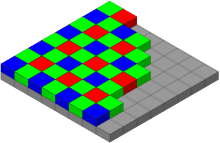
A Bayer filter on a CCD requires signal processing to get a red, green, and blue value at each pixel.
Signal Processing is a very mathematically oriented and intensive area forming the core of digital signal processing and it is rapidly expanding with new applications in every field of electrical engineering such as communications, control, radar, audio engineering, broadcast engineering, power electronics and bio-medical engineering as many already existing analog systems are replaced with their digital counterparts. Analog signal processing is still important in the design of many control systems.
DSP processor ICs are found in every type of modern electronic systems and products including, SDTV | HDTV sets,[33] radios and mobile communication devices, Hi-Fi audio equipment, Dolby noise reduction algorithms, GSM mobile phones, mp3 multimedia players, camcorders and digital cameras, automobile control systems, noise cancelling headphones, digital spectrum analyzers, intelligent missile guidance, radar, GPS based cruise control systems and all kinds of image processing, video processing, audio processing and speech processing systems.[34]
Telecommunications
Main article: Telecommunications engineering
Once the transmission characteristics of a system are determined, telecommunication engineers design the transmitters and receivers needed for such systems. These two are sometimes combined to form a two-way communication device known as a transceiver. A key consideration in the design of transmitters is their power consumption as this is closely related to their signal strength.[37][38] If the signal strength of a transmitter is insufficient the signal's information will be corrupted by noise.
Instrumentation
Main article: Instrumentation engineering
Often instrumentation is not used by itself, but instead as the sensors of larger electrical systems. For example, a thermocouple might be used to help ensure a furnace's temperature remains constant.[41] For this reason, instrumentation engineering is often viewed as the counterpart of control engineering.
Computers
Main article: Computer engineering
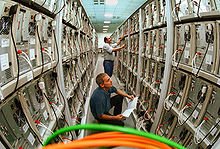
Supercomputers are used in fields as diverse as computational biology and geographic information systems.
Related disciplines
Mechatronics is an engineering discipline which deals with the convergence of electrical and mechanical systems. Such combined systems are known as electromechanical systems and have widespread adoption. Examples include automated manufacturing systems,[44] heating, ventilation and air-conditioning systems[45] and various subsystems of aircraft and automobiles. [46]The term mechatronics is typically used to refer to macroscopic systems but futurists have predicted the emergence of very small electromechanical devices. Already such small devices, known as Microelectromechanical systems (MEMS), are used in automobiles to tell airbags when to deploy,[47] in digital projectors to create sharper images and in inkjet printers to create nozzles for high definition printing. In the future it is hoped the devices will help build tiny implantable medical devices and improve optical communication.[48]
Biomedical engineering is another related discipline, concerned with the design of medical equipment. This includes fixed equipment such as ventilators, MRI scanners[49] and electrocardiograph monitors as well as mobile equipment such as cochlear implants, artificial pacemakers and artificial hearts.
Education
Electrical engineers typically possess an academic degree with a major in electrical engineering, electronics engineering, or electrical and electronic engineering.[50][51] The same fundamental principles are taught in all programs, though emphasis may vary according to title. The length of study for such a degree is usually four or five years and the completed degree may be designated as a Bachelor of Engineering, Bachelor of Science, Bachelor of Technology, or Bachelor of Applied Science depending on the university. The bachelor's degree generally includes units covering physics, mathematics, computer science, project management, and a variety of topics in electrical engineering.[52] Initially such topics cover most, if not all, of the subdisciplines of electrical engineering. At some schools, the students can then choose to emphasize one or more subdisciplines towards the end of their courses of study. At many schools, electronic engineering is included as part of an electrical award, sometimes explicitly, such as a Bachelor of Engineering (Electrical and Electronic), but in others electrical and electronic engineering are both considered to be sufficiently broad and complex that separate degrees are offered.[53]Some electrical engineers choose to study for a postgraduate degree such as a Master of Engineering/Master of Science (M.Eng./M.Sc.), a Master of Engineering Management, a Doctor of Philosophy (Ph.D.) in Engineering, an Engineering Doctorate (Eng.D.), or an Engineer's degree. The master's and engineer's degrees may consist of either research, coursework or a mixture of the two. The Doctor of Philosophy and Engineering Doctorate degrees consist of a significant research component and are often viewed as the entry point to academia. In the United Kingdom and some other European countries, Master of Engineering is often considered to be an undergraduate degree of slightly longer duration than the Bachelor of Engineering rather than postgraduate.[54]
Practicing engineers
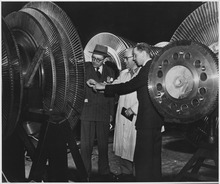
Belgian electrical engineers inspecting the rotor of a 40,000 kilowatt turbine of the General Electric Company in New York City
The advantages of certification vary depending upon location. For example, in the United States and Canada "only a licensed engineer may seal engineering work for public and private clients".[56] This requirement is enforced by state and provincial legislation such as Quebec's Engineers Act.[57] In other countries, no such legislation exists. Practically all certifying bodies maintain a code of ethics that they expect all members to abide by or risk expulsion.[58] In this way these organizations play an important role in maintaining ethical standards for the profession. Even in jurisdictions where certification has little or no legal bearing on work, engineers are subject to contract law. In cases where an engineer's work fails he or she may be subject to the tort of negligence and, in extreme cases, the charge of criminal negligence. An engineer's work must also comply with numerous other rules and regulations such as building codes and legislation pertaining to environmental law.
Professional bodies of note for electrical engineers include the Institute of Electrical and Electronics Engineers (IEEE) and the Institution of Engineering and Technology (IET). The IEEE claims to produce 30% of the world's literature in electrical engineering, has over 360,000 members worldwide and holds over 3,000 conferences annually.[59] The IET publishes 21 journals, has a worldwide membership of over 150,000, and claims to be the largest professional engineering society in Europe.[60][61] Obsolescence of technical skills is a serious concern for electrical engineers. Membership and participation in technical societies, regular reviews of periodicals in the field and a habit of continued learning are therefore essential to maintaining proficiency. MIET(Member of the Institution of Engineering and Technology) is recognised in Europe as Electrical and computer (technology) engineer.[62]
In Australia, Canada and the United States electrical engineers make up around 0.25% of the labor force (see note). Outside of Europe and North America, engineering graduates per-capita, and hence probably electrical engineering graduates also, are most numerous in Taiwan, Japan, and South Korea.

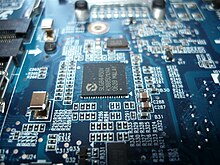


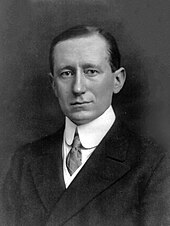

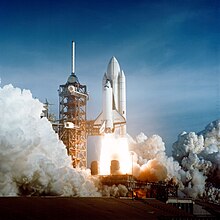
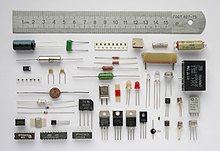
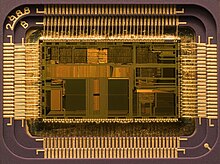
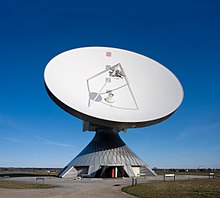
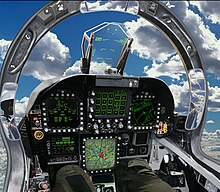

No comments:
Post a Comment
its cool